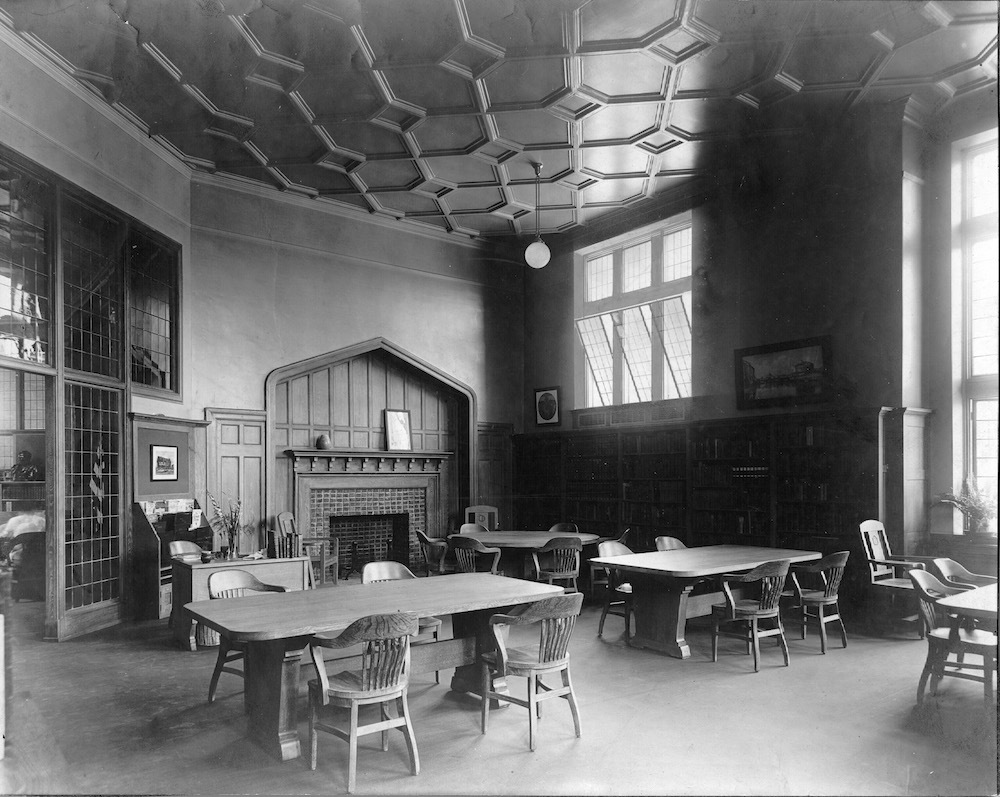South Branch Library
An Original Carnegie Library Enters Its Second Century in Grand Style

On December 1, 2018, the Gothic jewel of Cleveland-area libraries was reintroduced to Tremont. The celebration was immense: nearly 1,000 people turned out to marvel at the all-stone castle-like façade and experience a wholly renovated yet historically faithful interior. It had been a long wait.
The structure on the northwest corner of Clark Avenue and Scranton Road was closed for more than five years, during which time library officials, architects, community development organizations and neighborhood residents worked to reconcile views of the building’s future and subsequently orchestrate a massive renovation. But it all worked: At the age of 107, one of Cleveland’s original Carnegie Libraries was reborn.
The South Branch Library story predates Andrew Carnegie’s largess. The first library in the vicinity opened in 1897 in a rented building on the corner of Clark Avenue and Joseph Street (changed to West 20th Street in 1906 and Twinkie Lane in 1976). It was yellow brick with stone trimmings. Oak desks, bookcases and tables held as many as 7,000 volumes. Books were fumigated in 1901-02 due to a smallpox epidemic.
In 1903 the Cleveland Public Library “branch building program” was launched with a $250,000 gift from Andrew Carnegie. By 1914 a total of $590,000 was received. These monies ultimately underwrote the construction of 14 library branches: Broadway, Brooklyn, Carnegie West, East 79th Street, Hough, Jefferson, Lorain, Miles Park, Quincy, St. Clair, Sterling, Superior, Woodland and, of course, “South.” Each branch had its own collection of books and a full complement of librarians and assistants. More than 100 years later, the Brooklyn, Carnegie West, Jefferson, Lorain, Sterling and South buildings are still being used as libraries.
South Branch was the eighth to be built and the first Carnegie facility in the city to be made of stone rather than brick. Described as English Gothic on the outside and Tudor on the inside, it opened on June 12, 1911. Total cost for the land and building was $71,800. Architect Henry Whitfield, who previously designed Tufts College in Massachusetts and myriad other Carnegie libraries, cited Hoghton Tower in Lancashire, England, as his inspiration for South Branch.
The building is constructed of rough-hewn gray limestone and features a rectangular framed front entrance and windows. Crenellations (castle-like cutouts) line the roof parapet. An octagonal skylight over a central court gives the interior a remarkable “outside” feel. Fireplace tiles—designed in a style called “Medieval Decoratives”—were made by Moravian Pottery & Tile Works in Bucks County, Pennsylvania.
When South Branch opened, the neighborhood primarily comprised German, Bohemian and American-born families. By 1924 many long-term residents had moved on, replaced by a wider variety of immigrants. Around that time, 21 different nationalities were represented in the South Branch register.
In the 1960s, the South Branch community was dealt a variety of serious blows: Most severe were the construction of Interstate 71 several hundred yards to the east and Interstate 90/490 roughly the same distance to the north. Hundreds of area homes were destroyed and the library was symbolically separated from thousands of neighbors. An ongoing residential exodus (an estimated population drop of 31 percent from 1960 to 1970) further reduced the library’s patronage.
Today, South Branch is one of two libraries serving a recovering Tremont neighborhood as well as visitors from surrounding communities such as Clark-Fulton, Stockyards and Ohio City. The population served by the library is still smaller than it was several generations ago, but the range of services it provides and the strength of support it receives from neighbors and patrons are greater than ever.
“The only thing that you absolutely have to know is the location of the library.” —Albert Einstein
Images









